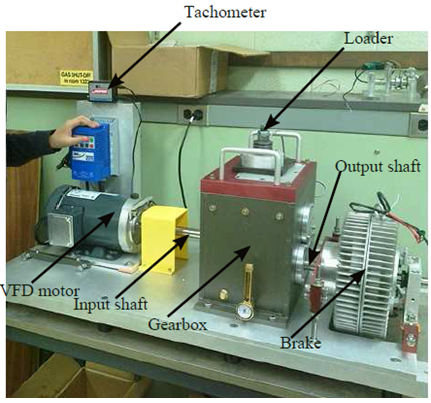Effect of Torsional Load in Gear-Fault Diagnostics
Dr. Budhaditya Hazra8227 Hermitage Road, Richmond, VA 23228.
Published: October, 27 2014
Abstract
The vibration signature of gear tooth seeded fault under the effect of torsional braking load has been studied in this tech note. Experiments were carried out on Spectra Quest’s Drivetrain Diagnostic Simulator (DDS). The test rig simulates a two-stage parallel gear transmission. The intermediate gear in the gearbox was intentionally faulted by chipping. For each gear configuration, tests were conducted with and without torsional loading applied by a magnetic brake. The experimental results show that due to the impact caused by the faulted tooth, strong sidebands arise around the meshing frequency in the spectra in presence of a resistive torsional load. The relationship between the torsional load (i.e. brake) and the energy in the sidebands is not straightforward, which is explained here with the light of the test data.
Gear-fault diagnostics using Drivetrain Diagnostic Simulator
Gearboxes are very commonly used in rotating machines. During their extended service lifetimes, gear teeth will inevitably be worn, chipped, or even missing under high load. Therefore effective diagnostic methods are required in order to enhance the reliability of the entire machine before any unexpected catastrophic consequences occur. The vibration-based techniques are the most widely used since it is easy to obtain the acceleration signals using accelerometers. But none of the previous studies addressed the problem of the effect of torsional load in gearbox diagnostics. Compared to the previous tech notes, the experiments in this article were conducted on Spectra Quest’s drivetrain diagnostic simulator (DDS). Instead of a one-stage transmission, a two-stage transmission with spur gears was investigated. The objective of these experiments is to relate the development of the frequency component changes to the severity level and torsional load. DDS is a specially designed platform for studying signatures of common gearing faults. Spur or helical gears can be fitted into a two-stage parallel shaft design.






